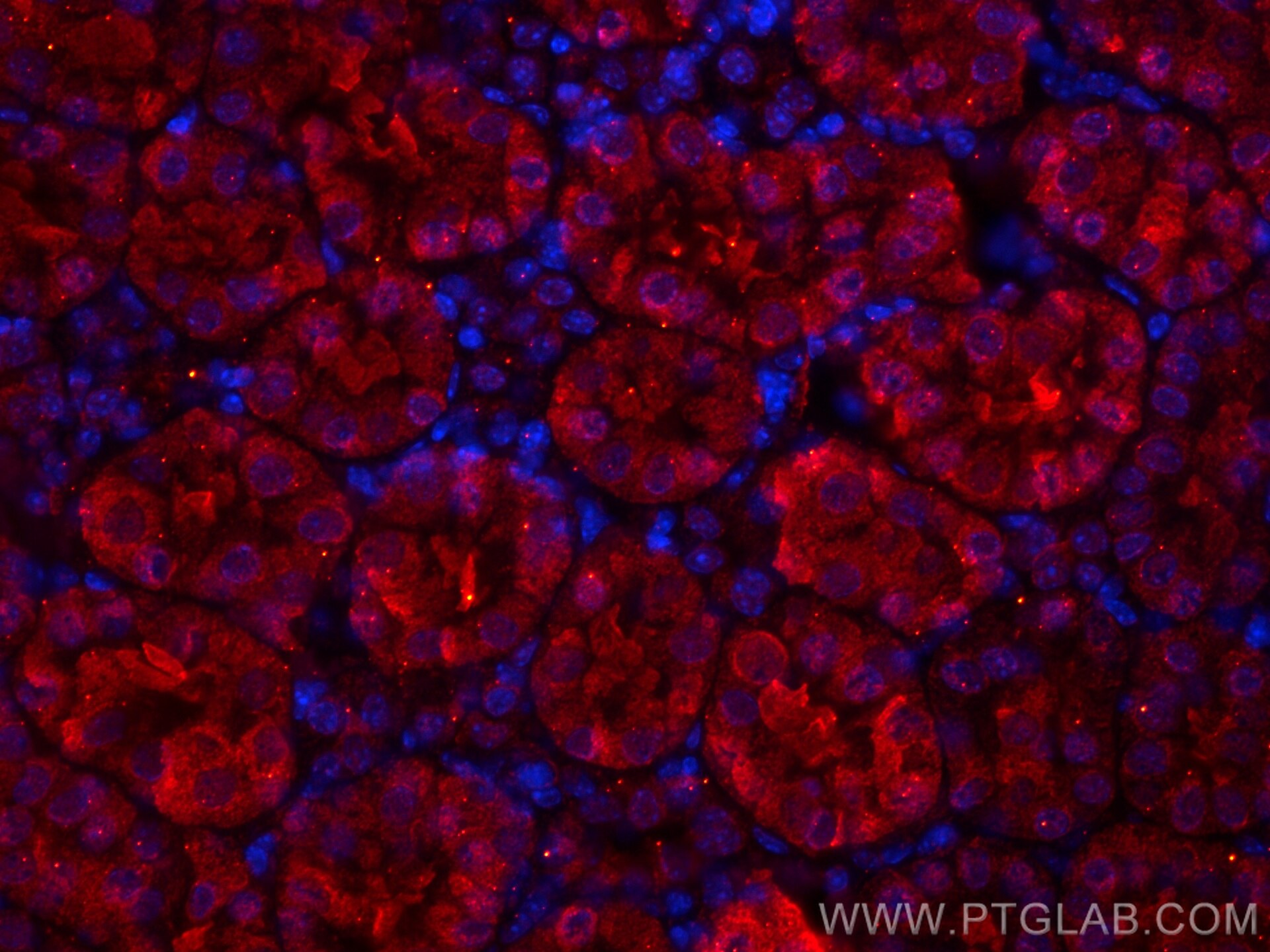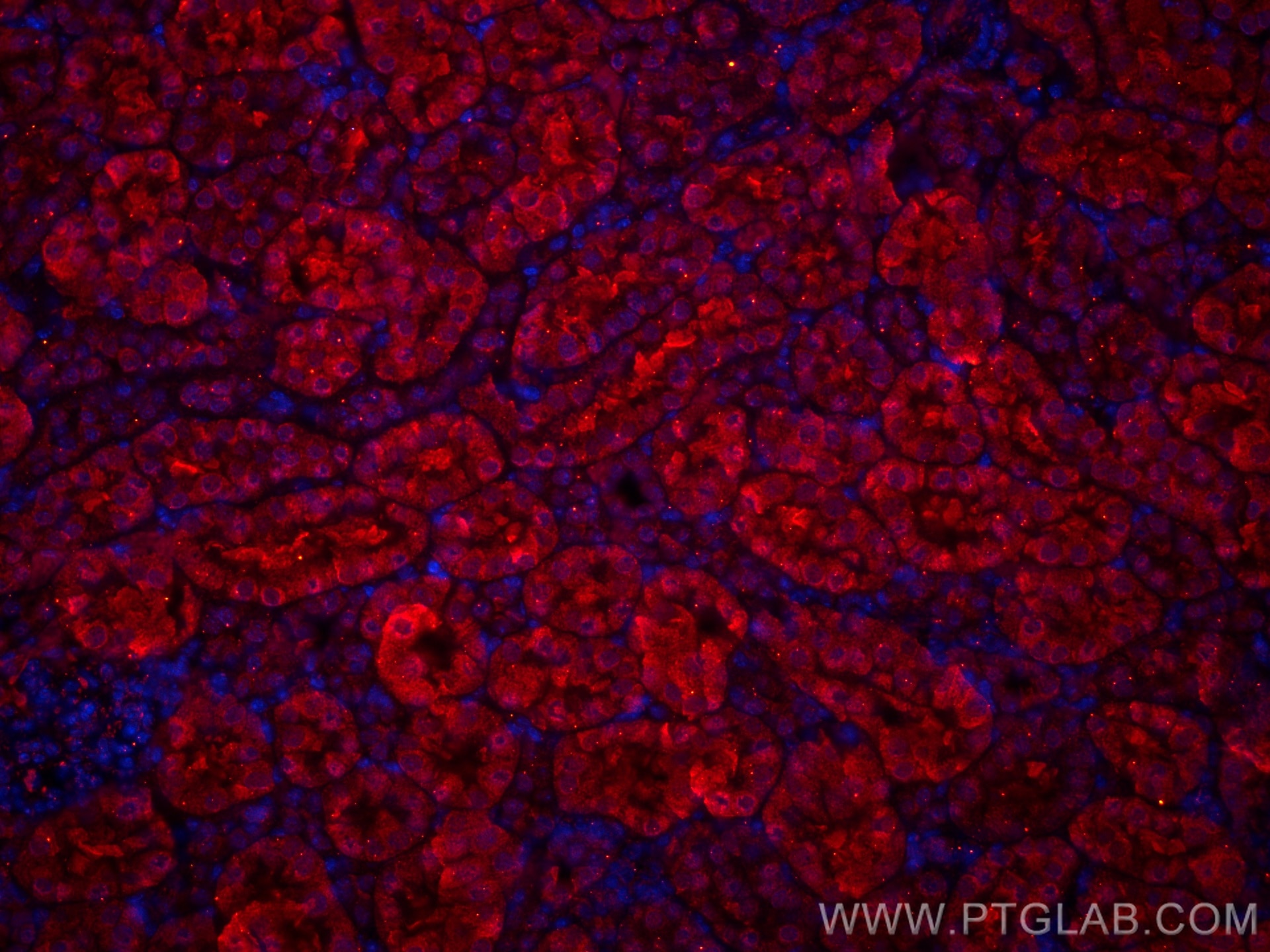SSTR5 Monoklonaler Antikörper
SSTR5 Monoklonal Antikörper für IF
Wirt / Isotyp
Maus / IgG1
Getestete Reaktivität
human, Maus, Ratte
Anwendung
IF
Konjugation
CoraLite®594 Fluorescent Dye
CloneNo.
2B10D8
Kat-Nr. : CL594-66772
Synonyme
Galerie der Validierungsdaten
Geprüfte Anwendungen
| Erfolgreiche Detektion in IF | Mausnierengewebe |
Empfohlene Verdünnung
| Anwendung | Verdünnung |
|---|---|
| Immunfluoreszenz (IF) | IF : 1:50-1:500 |
| It is recommended that this reagent should be titrated in each testing system to obtain optimal results. | |
| Sample-dependent, check data in validation data gallery | |
Produktinformation
CL594-66772 bindet in IF SSTR5 und zeigt Reaktivität mit human, Maus, Ratten
| Getestete Reaktivität | human, Maus, Ratte |
| Wirt / Isotyp | Maus / IgG1 |
| Klonalität | Monoklonal |
| Typ | Antikörper |
| Immunogen | SSTR5 fusion protein Ag18615 |
| Vollständiger Name | somatostatin receptor 5 |
| Berechnetes Molekulargewicht | 364 aa, 39 kDa |
| Beobachtetes Molekulargewicht | 41 kDa |
| GenBank-Zugangsnummer | BC146576 |
| Gene symbol | SSTR5 |
| Gene ID (NCBI) | 6755 |
| Konjugation | CoraLite®594 Fluorescent Dye |
| Excitation/Emission maxima wavelengths | 588 nm / 604 nm |
| Form | Liquid |
| Reinigungsmethode | Protein-G-Reinigung |
| Lagerungspuffer | BS mit 50% Glyzerin, 0,05% Proclin300, 0,5% BSA, pH 7,3. |
| Lagerungsbedingungen | Bei -20°C lagern. Vor Licht schützen. Nach dem Versand ein Jahr stabil. Aliquotieren ist bei -20oC Lagerung nicht notwendig. 20ul Größen enthalten 0,1% BSA. |
Hintergrundinformationen
Somatostatin is a widely distributed peptide with a broad range of biological actions. Two biological forms of somatostatin exist: somatostatin-14 and -28. Somatostatin receptors (SSTR1, 2A and B, 3, 4 and 5) belong to the G protein coupled receptor family and have a wide expression pattern in both normal tissues and solid tumors (PMID: 23872332). SSTR5 has greater affinity for somatostatin-28 than somatostatin-14 (PMID: 8373420).
Protokolle
| Produktspezifische Protokolle | |
|---|---|
| IF protocol for CL594 SSTR5 antibody CL594-66772 | Protokoll herunterladen |
| Standard-Protokolle | |
|---|---|
| Klicken Sie hier, um unsere Standardprotokolle anzuzeigen |



